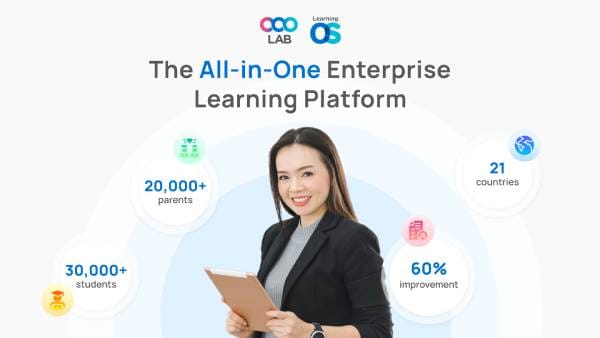One of the major challenges in talent management for sales organizations today is effectively handling a multi-generational workforce. For the first time in history, businesses are faced with the challenge of managing five different generations working together.
Each generation brings its own set of values, beliefs, and preferences to the workplace. Factors like delayed retirements and the rising levels of higher education mean that older employees are often supervised by younger ones, blurring the traditional generational hierarchy in many companies.
A significant area where this generational diversity can present difficulties is in training and developing employees. Let’s explore how organizations can create a successful sales training strategy that addresses the needs of a multi-generational workforce.

I. Get to know your 5 generations
Here’s an overview of the five generations that are currently part of the workforce:
- Traditionalists — Individuals born before 1945. While many have retired, a number are still active in the workforce. They are known for their strong work ethic and respect for authority, though they might find technology challenging.
- Baby Boomers — Born between 1946 and 1964, many Baby Boomers are nearing retirement age. They grew up during a time of significant social change and are characterized by their competitive nature, optimism, adaptability, and consumer-driven mindset.
- Generation X — Those born between 1965 and 1980. This generation is still a significant part of the workforce and is known for their technological savvy, independence, and emphasis on achieving a work/life balance.
- Millennials — Born between 1981 and 1997. Millennials are marked by their ease with technology, adaptability, progressive social views, and a strong preference for teamwork.
- Generation Z — Individuals born after 1997. Although they make up a smaller segment of the workforce, they are highly educated, tech-savvy, and proficient with social media.
Ready to take your Sales Training to the next level?

II. Training methods
Since around 2015, Millennials have been the predominant generation in the workplace, and it is expected that they will make up 75% of the workforce by 2025. As Generation Z continues to enter the job market, Traditionalists will gradually retire, making it essential to adopt forward-thinking approaches to your sales training strategies.
Embracing technology-based training methods is a wise choice for meeting the needs of the modern workforce. However, it's also important to recognize that Baby Boomers and Traditionalists, who are accustomed to more conventional, in-person training methods, may benefit more from these traditional approaches.
Training Magazine reports that while Generation X generally prefers to work independently, Millennials thrive in team environments. To address these diverse preferences, your training program should incorporate a mix of traditional classroom instruction and innovative, technology-driven techniques, and regularly update the methods used.
>>> Read more: Addressing declining retail foot traffic issue
>>> Read more: Why is blended learning the future of corporate training
>>> Read more: Why is employee upskilling non-negotiable for business success
>>> Read more: 10 ways that an LMS can revolutionize your corporate training
>>> Read more: 5 essential sales techniques every sales rep should master
>>> Read more: The role of Emotional Intelligence (EI) in effective Sales
>>> Read more: What is the distinction between LMS and LXP
III. Cross-gen collaboration
One of the most effective talent management strategies for addressing generational differences in training and coaching is to incorporate cross-generational teamwork. For instance, group training activities can combine the structured format preferred by Baby Boomers with the collaborative environment that Millennials enjoy.
Additionally, the practice of reverse mentoring has gained popularity, where younger employees teach older colleagues about the latest technologies, while older employees share their experience and knowledge in return. This mutual exchange helps bridge gaps and can ease the discomfort of younger managers instructing more senior team members.
In essence, the generational divide in the workplace does not have to be a barrier to effective training. By offering diverse training methods, adapting to the needs of different age groups, and fostering intergenerational collaboration, sales leaders can create a learning environment where all employees benefit and grow together.
IV. Benefits of customized training
One of the most successful approaches for managing generational differences in training and coaching is to implement cross-generational teamwork. For example, group training sessions can blend the structured learning preferred by Baby Boomers with the collaborative experiences that Millennials find engaging.
Moreover, reverse mentoring has become a popular strategy, where younger employees teach older colleagues about modern technologies, while the older employees provide their valuable experience and insights in return. This reciprocal learning process helps bridge generational gaps and can ease any tension that might arise from younger managers guiding more experienced team members.
Ultimately, the generational divide in the workplace doesn’t need to hinder effective training. By employing a range of training techniques, adapting to the preferences of different age groups, and promoting collaboration between generations, sales leaders can foster a learning environment where employees of all ages can thrive and support each other's growth.
V. What is LearningOS
An All-In-One Sales Training Solution
Our platform is designed for dynamic hybrid sales training.
Implement a flexible sales training program with instructor-led sessions, online or offline, 24/7.
Assign engaging interactive and practical eLearning accessible anytime, anywhere.
Get clear overviews of employee analytics to see who's hitting targets.
Effortlessly share important resources internally and save time and effort.
VI. Conclusion
Grasping the characteristics of each generation will simplify the training process. You can design tailored training programs for different age groups and encourage intergenerational collaboration. We hope you find this information useful. Catch you in the next blog.
About us
At OOOLAB (pronounced 'uːlæb'), our mission is to make complex learning operations simple. We aim to positively impact the lives of over 1,000,000 learners and educators by the end of 2026.
OOOLAB's LearningOS provides educational institutions and corporate enterprises with an all-in-one solution to create and deliver engaging learning experiences.
Reach out to us at: Linkedin, FaceBook


